It was a chilly day when I visited, too cool for the beetles, but skies were clear and the sun bright - uplifting for February. There were still patches of snow on the ground from the latest (and hopefully final) storm of the season just days previous. In order to get to the dunes and beach you must first walk through a thicket of young Sweetgums (Liquidambar styraciflua) so thick you can barely see more than 20' in. Soon after you enter a more diverse forest with a mix of Oaks, Maples and American Hollies, but the most dominant tree species is the Loblolly Pine (Pinus taeda). Where the dunes begin the forest thins and eventually you reach the beach where Mother Chesapeake comes into view.
At one end of the beach is a drowned forest, where among the exposed roots discarded ropes and netting are trapped and barnacle gardens grow. All of this is perhaps best viewed from what appears to me to be the perfectly sized and perfectly located beach cottage, just outside the refuge bounds.
At the other end of the beach I found my throne, which was not that easy to get into, nor that comfortable....
... but what a commanding view.
Though this was my first visit, I know I will be back. It is the kind of place where you are not likely to see many other people, and it will be great place to gather thoughts and to study water and sky. I know that the sunsets here must be glorious as the beach faces west, unusually for people on this coast.
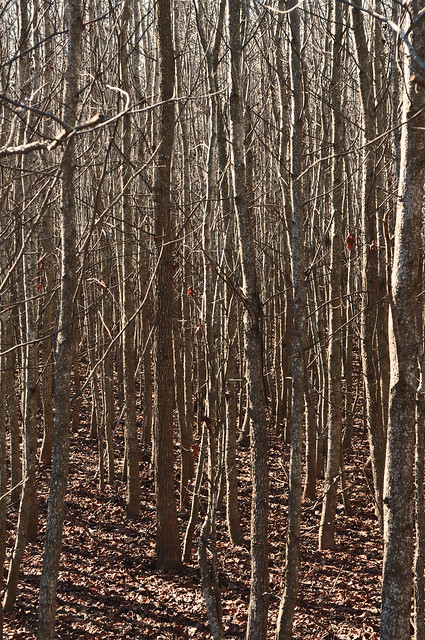

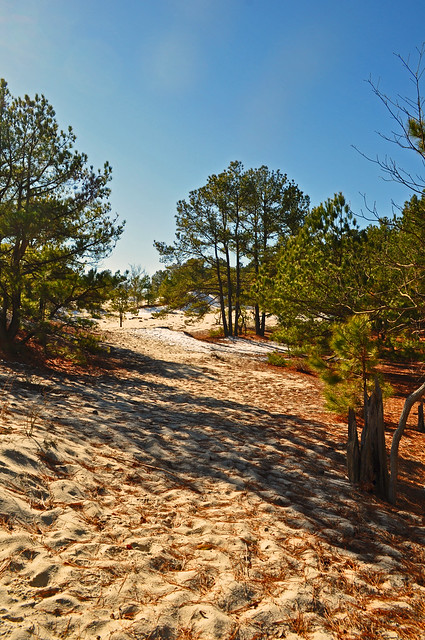

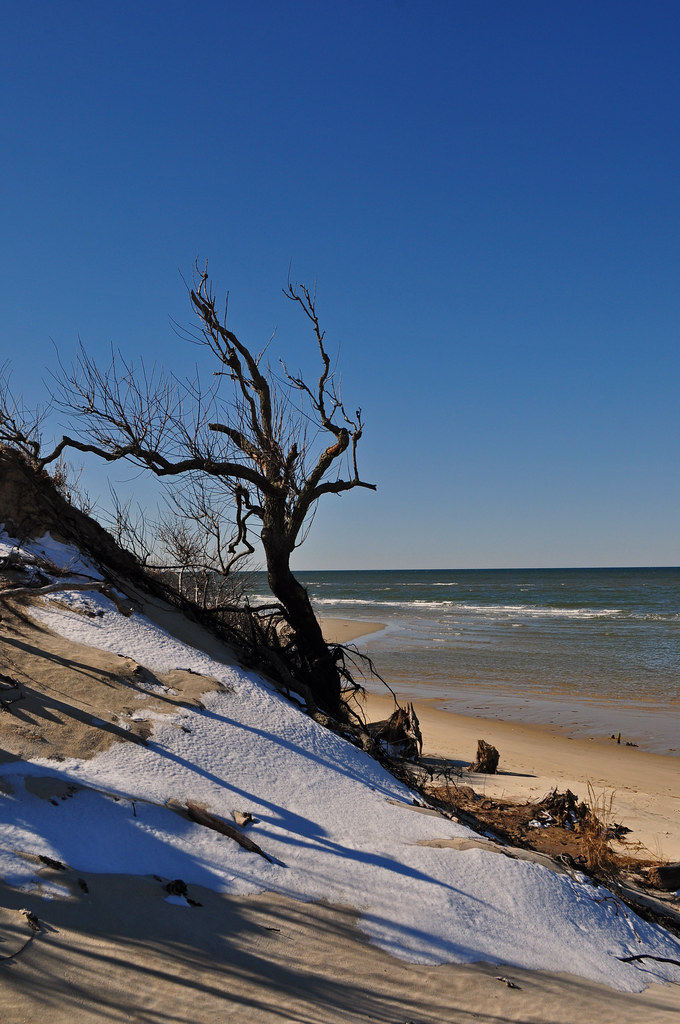
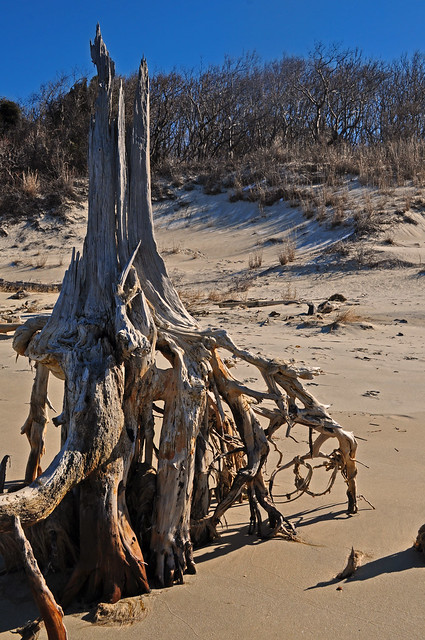
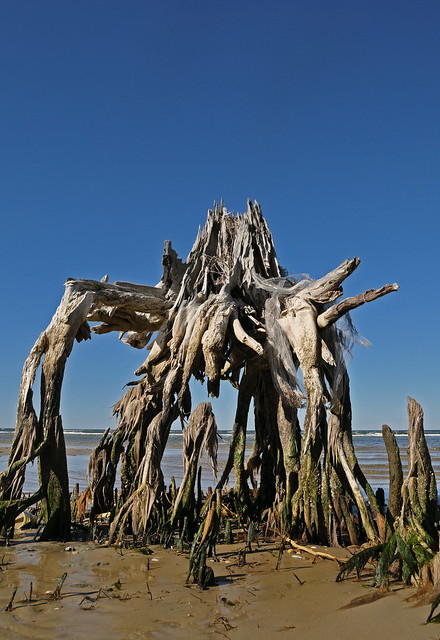
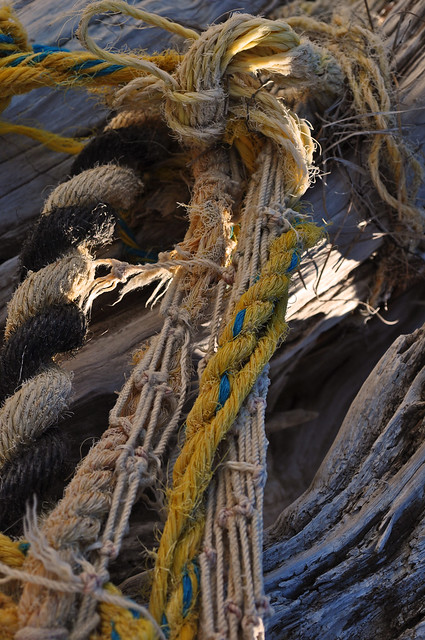
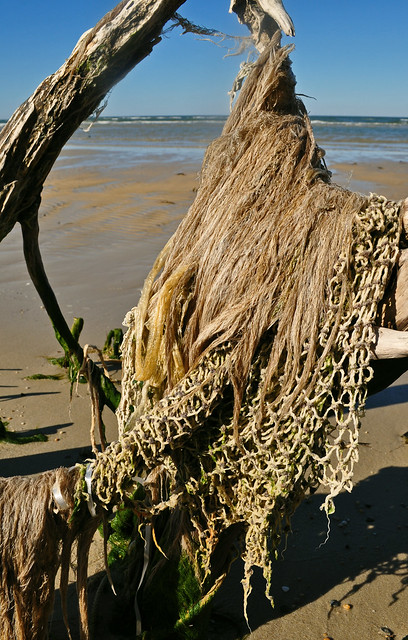
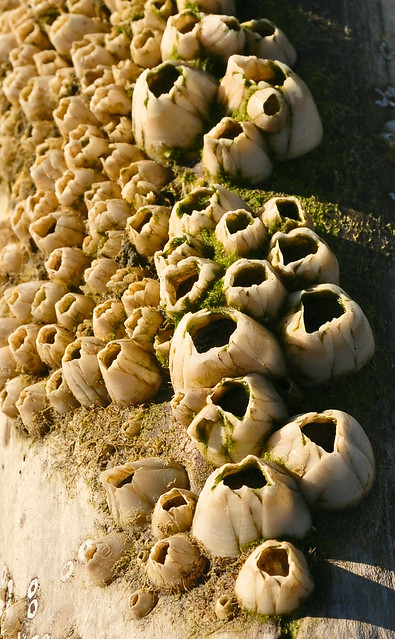

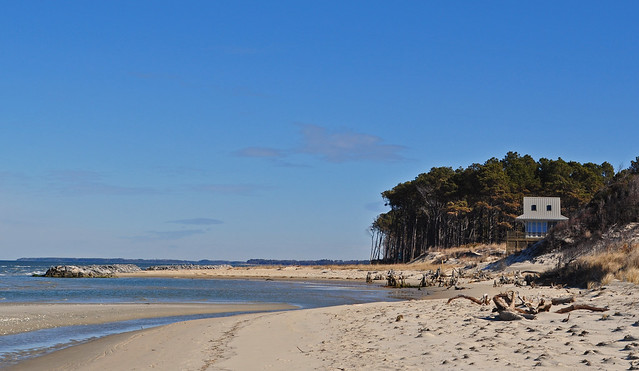
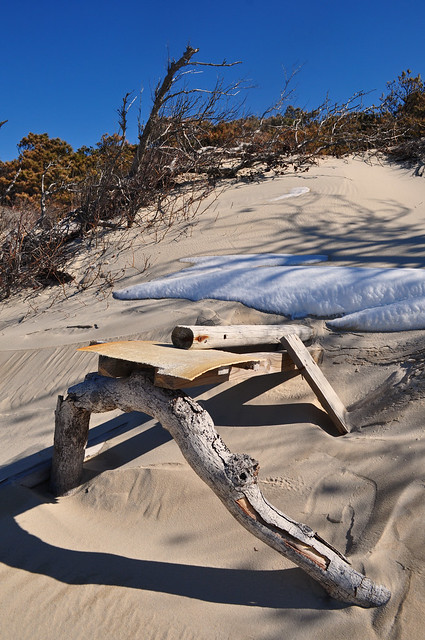





I wonder why its called Savage Neck Dunes? Your photos are superb with such scenic beauty of the trees against the blue clear sky. Those drowned woods or whatever was left behind are so interesting to look at. A nice quite place to visit.
ReplyDeleteIt's called the savage neck dunes because it is located near Savage neck.
DeleteLes, Another fabulous virtual tour. Love the photo of the barnacles and all the driftwood/drowned forest shots. Have you put together your portfolio yet? I would also be interested in knowing where the name Savage Neck comes from. Carolyn
ReplyDeletewhat an unusual sight seeing those loblollies growing in so much sand. im not sure ive ever seen them so close to the ocean, though they are all over the coastal plain. pretty shots. the barnacles and washed out tree root "house" are amazing.
ReplyDeleteIf that cottage on the beach is for sale, I'll take it! No telephone, no television... just me, the birds and the beetles! Sigh....
ReplyDeleteIt looks like a good play to relax and meditate. It reminds me of a deserted island.
ReplyDeleteA great transect! The thicket of sweetgums is thick. I've never seen sweetgums growing like that before; guess that is what happens when one lives mostly in cities.
ReplyDeleteLes, you take such wonderful pictures. I felt like I was right there walking beside you. That takes true talent.
ReplyDeleteThe footprints of the bird called "Ripple" was my favorite.
I also wonder why it has such a name.~~Dee
What incredible photos, especially on your Flickr site. Selecting a favorite is impossible. The photos of the drowned forest are remarkable, the roots look sculptural. love your photos as the tide went out, leaving lovely patterns in the sand.
ReplyDeleteI had never heard of Savage Neck Dunes either, checked it out - near Cape Charles. I added it to my to-go list. Thank you!
Quick question - Do you know what happened to the forest or when? I've seen similar beaches on the Western Shore where forests sustained great damage during Hurricane Isabel and later storms. When the trees and marine vegetation didn't recover, many secluded sandy beaches vanished.
ReplyDeleteStunning location beautifully captured. I love the drowned forest. I actually feel more peaceful having read this post, that hideaway looks like my dream cottage, though I'm not sure what I'd do about a garden!
ReplyDeleteSweet gums, yikes I hate those things in my yard. Love them in the woods though. This looks like a wonderful place to unwind the mind and soul…
ReplyDeleteFunny to see your images of the wood. I have been trying to photograph at Folly Beach, with a focus on these same kind of petrified wood sculptures. Love the images.
ReplyDeleteWonderful guided tour you offer us my friend! These dunes are beautiful, paradisaical, rough and full of mysticism. Nice job!
ReplyDeleteA clear blue sky couldn't get much bluer! Your pictures are beautiful. I love the weathered and grey drowned forest stumps and the tiny feet in the waves of sand.
ReplyDeleteLove it - the place and your photos!
ReplyDeletep3chanden,
ReplyDeleteAround here a "neck" is a skinny peninsula and unfortunately "savage" refers to native Americans.
Carolyn,
See above.
Daricia,
They will grow very close to salt water and are quite tolerant. It is one of the first tree species to colonize this ecosystem.
Ann,
You will have to fight me for it, though we could take turns.
Phillip,
It was very relaxing and clearing.
Georgia,
Further into the walk, across from the thicket of sweetgums, I saw the mother of all of them.
Dee,
Wouldn't you love to have a floor that looked like that.
Pam,
I was just in Cape Charles today, trying to get some photos for a future post.
Plantalicious,
I think if I lived here, I would let Mother Nature plant the garden.
Skeeter,
I agree, sweetgums always look better somewhere else.
Jim,
I would like to see your Folly photos, I lived there in delightful squalor for a year.
NAL,
Thanks for travelling with me.
Jennifer,
I actually found myself wishing for a cloud or two to add some interest, but one must enjoy whatever weather is given.
Joan,
Thank you!
Les
Savage is a local family name. You will see other things named 'Savage' in that general area of the DelMarVa.
ReplyDelete/lodefinition
I used to camp here when I was a kid. You took some really excellent pictures!
ReplyDeleteThanks Jesse, I am glad you enjoyed it.
ReplyDeleteLes
Thanks Jesse, I am glad you enjoyed it.
ReplyDeleteLes
Thomas Savage was granted 9000 acres which became known as Savage's Neck in 1620 or 1621 by Debedeavon, the "Laughing King" of the Native American tribes of the eastern shore. This gift was in gratitude for Thomas Savage's service as an interpreter, having brought much trade to this isolated area from the Jamestown settlement.
ReplyDelete